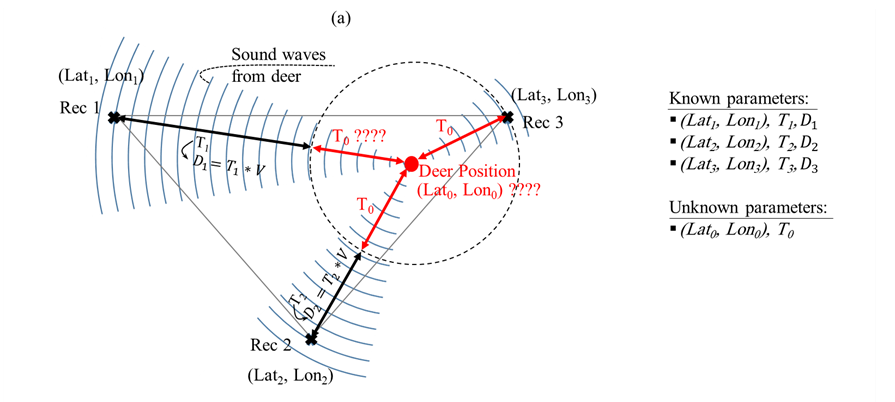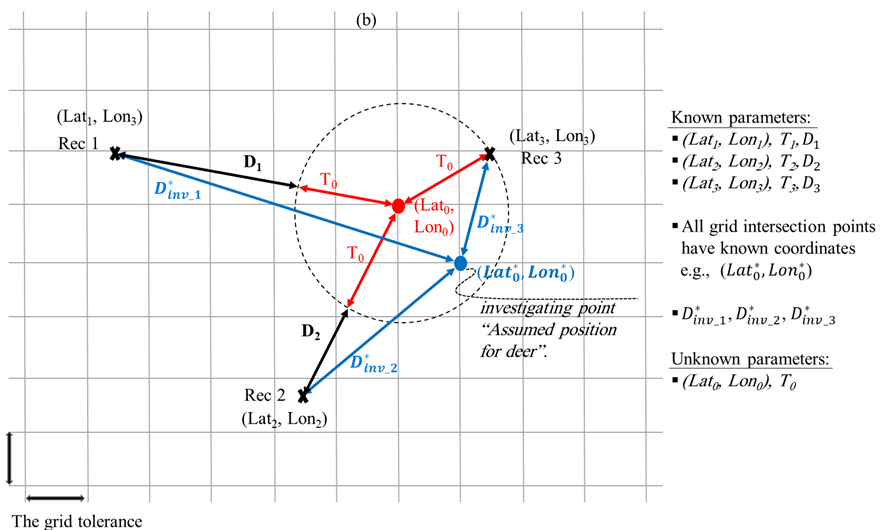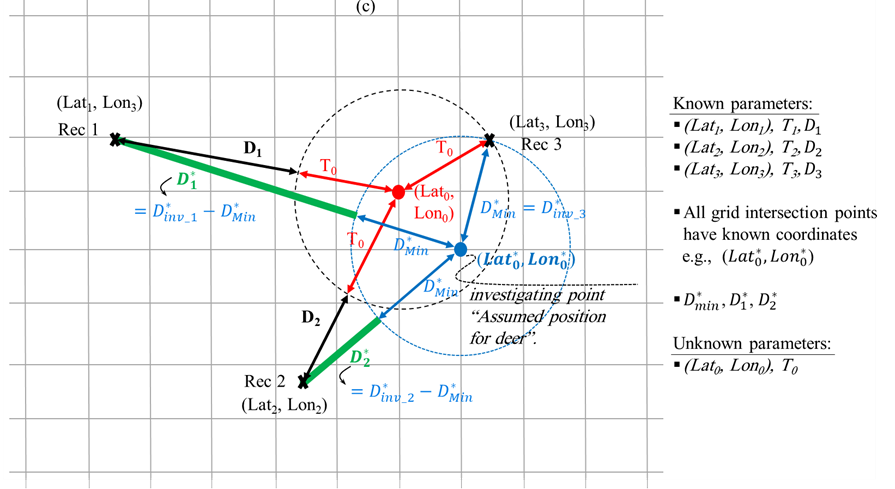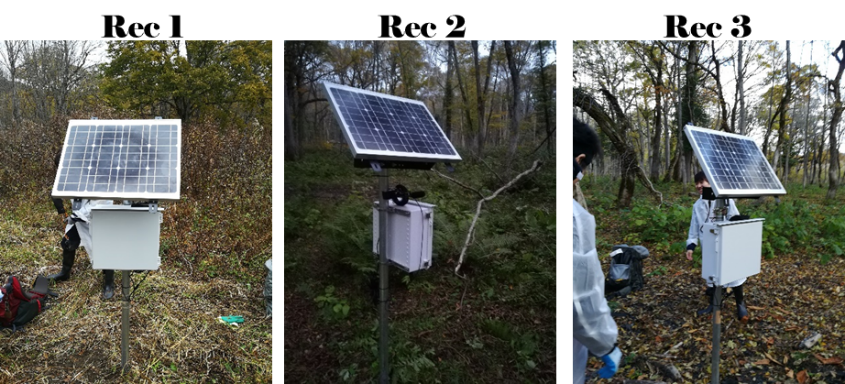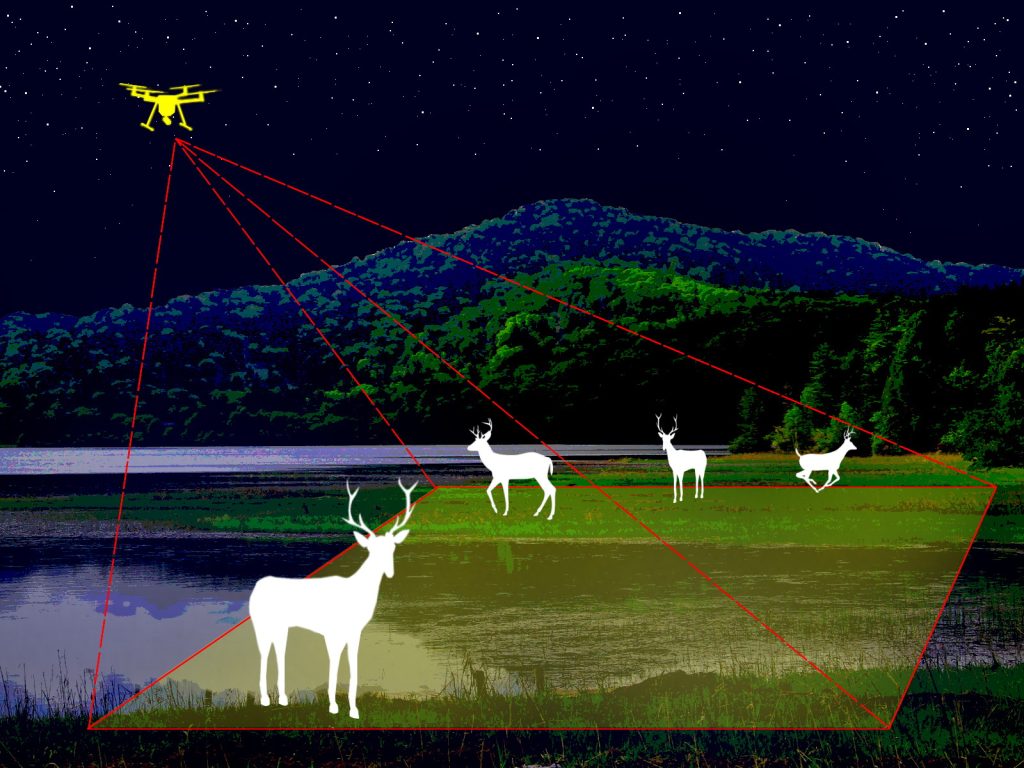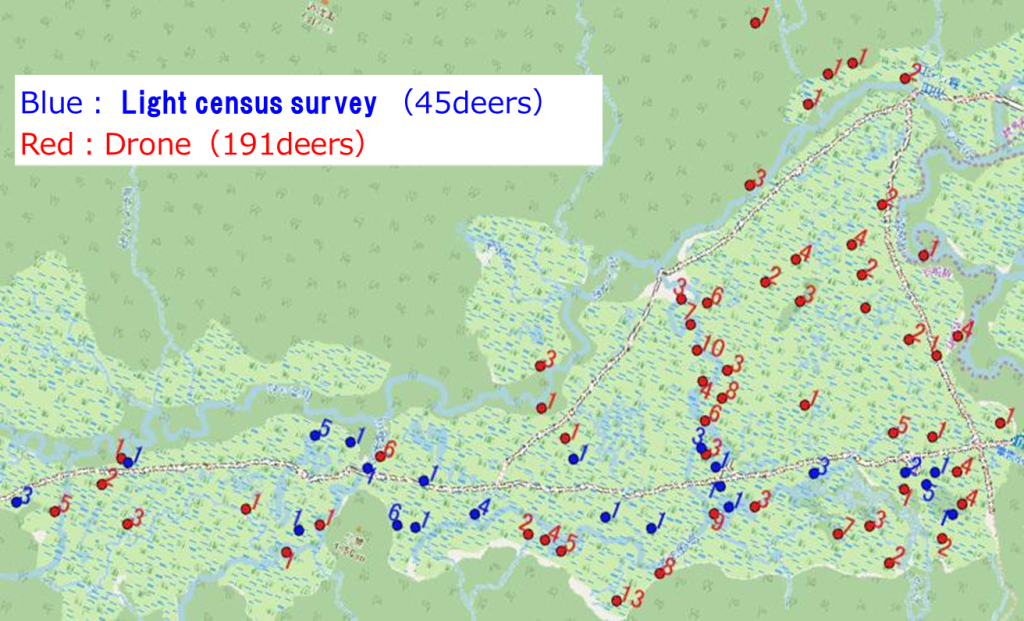Development on Methods for Estimating Population Size of Deer in OZE with Ground and Remote Sensing Techniques
Last Updated:

尾瀬ヶ原・尾瀬沼では、1990年代半ばからシカが確認されるようになり、自然植生が破壊され、生態系へ不可逆的な影響が生じることが懸念されてきました。被害を低減させるために、シカの捕獲事業や継続的な植生被害のモニタリング、防護手法の検討はなされてきましたが、シカの生息個体数が不明なため、必要な捕獲数を設定することはできていませんでした。
これまで尾瀬のシカの生息数に関する指標として、主にはライトセンサス調査による目撃数の変化が使われてきましたが、ライトセンサス調査はその日の気象条件やシカの動きに強く影響を受けるため、データの観測誤差が大きくなる問題があります。
そこでシカの個体数を把握することを目的に、シカの特徴的な鳴き声から時空間分布を推定する手法と、夜間にドローンの熱赤外カメラを用いて全域にすむ個体数を把握する手法の開発と実用化を進めています。本手法は、従来の手法に比べ、保全対象地域に人が高頻度で入りこむことなく、少ない労力で、シカの時空間分布を精度高く継続的に推定することを可能にしています。
Deer are currently being caught both inside and outside the Oze wetland area, but the number of catches required to reduce vegetation damage in Oze has not yet been established. There is need for a new density survey method that can determine population size in places that are difficult for people to enter, such as Oze.
Until now, changes in the number of sightings from light census surveys have been used primarily as an index for the deer population in Oze. However, since the light census survey is strongly influenced by weather conditions and the movement of deer on the day of the survey, observation errors in the data easily become large.
In the present study, we developed a method for evaluating the deer population in Ozegahara using microphone ground sensors and an unmanned aerial vehicle (UAV). Specifically, we first developed a deer population estimation method using a microphone, followed by a deer population estimation method using the UAV. We then carried out a comparative examination of the accuracy of these deer population estimation methods. We propose these new methods for estimating deer populations in wetlands, which are difficult for humans to enter.
関連情報 / Reference
2024.11.13 Press Release
2021.01.28 Press Release
- “フィーヨフィーヨ”特徴的な鳴き声とドローン画像からシカの時空間分布を推定 ~環境を荒らさずに野生動物を調査~(JP)
- Listening to the Call of the Wild: Tracking Deer Movements Using Sound(EN)
論文 / Papers
- Salem Ibrahim Salem, Sakae Shirayama, Sho Shimazaki, Kazuo Oki, Ensemble deep learning and anomaly detection framework for automatic audio classification: Insights into deer vocalizations, Ecological Informatics, Volume 84, 2024, 102883, ISSN 1574-9541,
https://doi.org/10.1016/j.ecoinf.2024.102883 - 沖 一雄, 牧 雅康, 奥村 忠誠, サレム イブラヒム サレム,複数マイクロフォン・ドローンリモートセンシング手法による尾瀬ヶ原湿原のニホンジカ個体数の推定, 低温科学, 80, 477-482, 2022-03-31, DOI:10.14943/lowtemsci.80.477
- Salem, S.I.; Fujisao, K.; Maki, M.; Okumura, T.; Oki, K. Detecting and Tracking the Positions of Wild Ungulates Using Sound Recordings. Sensors 2021, 21, 866.
DOI:10.3390/s21030866
